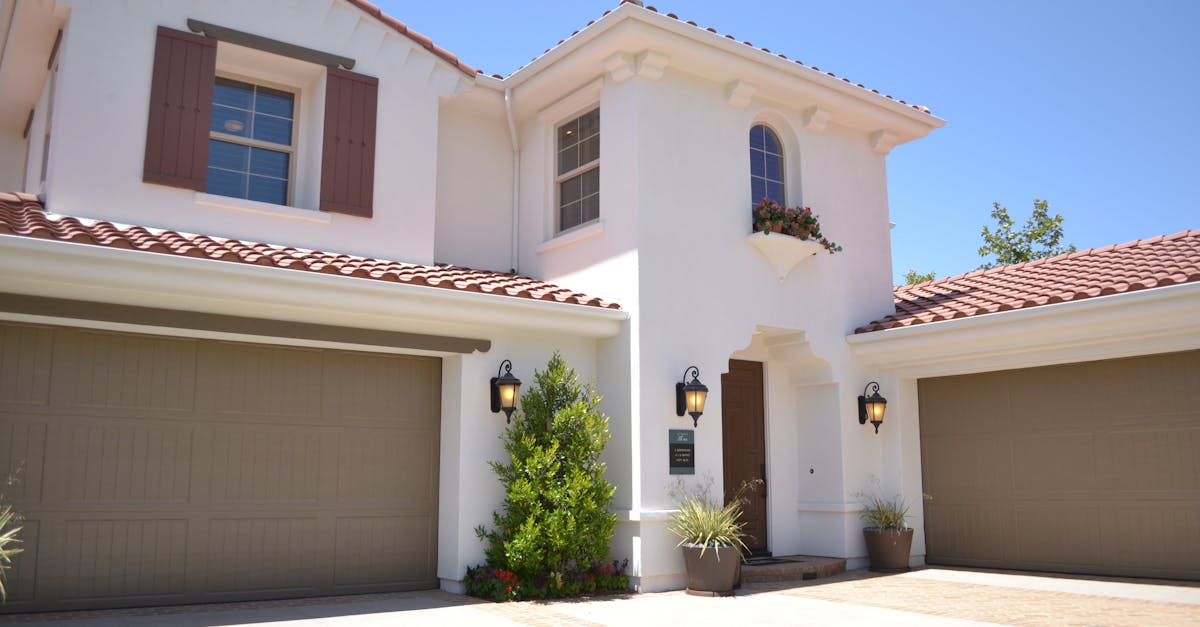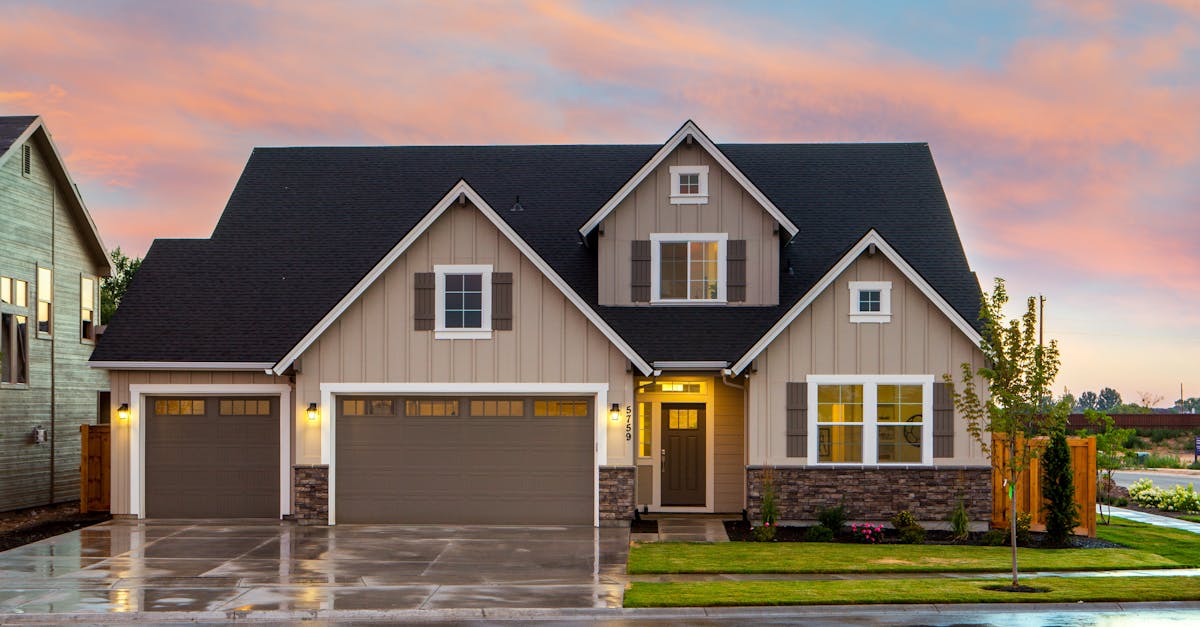
Garage Door Repair
At Pensacola Garage Door Repair, we understand that a malfunctioning garage door can disrupt your daily routine and compromise your home's security. Our dedicated team of experienced technicians is here to provide prompt and reliable garage door repair services tailored to meet your needs. Whether you're dealing with a broken spring, a misaligned track, or a malfunctioning opener, we use high-quality parts and cutting-edge techniques to restore your garage door's functionality efficiently. Committed to customer satisfaction, we offer transparent pricing and swift service to ensure your garage door operates smoothly and safely, giving you peace of mind. Choose Pensacola Garage Door Repair for unparalleled expertise in garage door repairs, and let us help keep your home secure and accessible.
Choosing the Right Replacement Parts
Selecting appropriate replacement parts for a garage door is crucial for ensuring optimal performance and safety. It is important to start by identifying the specific components that require replacement, which can range from hinges and rollers to openers and sensors. Always opt for high-quality parts that are compatible with your existing system. Checking the model and brand of your garage door can help streamline the selection process and prevent any compatibility issues.
Another key aspect involves understanding the warranty and return policies of the parts you purchase. Sometimes, parts may not fit as expected due to slight variations in design or manufacturing. In such cases, having a clear return policy can save both time and money. Keeping in mind the age and condition of your garage door may also influence your choice. Investing in durable and reliable components can lead to long-term satisfaction and fewer repairs in the future.
Factors to Consider for Compatibility
When selecting replacement parts for your garage door, it is essential to ensure compatibility with your existing system. First, consider the make and model of your door, as variations in design can lead to issues during installation. Measurements play a crucial role; every part must fit correctly to avoid future complications. Additionally, understanding the material composition of the original parts can help guide your decisions.
Another vital aspect is the operational mechanism. Different garage door types, such as sectional or roll-up, require specific components. Pay attention to the weight capacity ratings of parts like tracks and rollers, as these need to match your door's weight for optimal performance. Reviewing the manufacturer's specifications can clarify which parts are suitable for your setup, thereby minimizing the risk of malfunction.
The Role of Garage Door Springs
Garage door springs are fundamental components that ensure the proper functioning of the system. They counterbalance the heavy weight of the garage door, allowing it to open and close smoothly with minimal effort. When these springs wear out or break, the door may become difficult to operate or can even become a safety hazard. Regular maintenance of these springs can prevent costly repairs and enhance the overall longevity of the garage door.
The two main types of springs, torsion and extension, each play distinctive roles based on their design. Torsion springs are mounted above the garage door opening and are wound tightly to store energy, providing powerful lifting assistance. Extension springs, found on either side of the door, stretch and contract during operation. Understanding the nuances between these springs can help homeowners make informed decisions regarding repairs or replacements.
Types of Springs and Their Lifespan
Garage doors typically rely on two primary types of springs: torsion springs and extension springs. Torsion springs are mounted above the door and work by twisting to lift the door, offering a balanced operation. These springs generally have a longer lifespan, averaging around 15,000 cycles, equating to about 7 to 12 years of use. In contrast, extension springs are located on either side of the door. They stretch and extend as the door opens and closes but usually have a shorter lifespan, lasting about 5,000 to 10,000 cycles depending on usage and maintenance.
The lifespan of springs can also depend on several factors, including the door's weight, frequency of use, installation quality, and environmental conditions. Over time, springs can experience wear and tear, leading to reduced performance and increased risk of failure. Regular inspections and maintenance can help identify signs of wear, allowing for timely replacements that ensure the garage door operates smoothly. Understanding these mechanics helps homeowners make informed decisions about repairs and replacements.
Cost Factors in Garage Door Repair
When considering garage door repair, several cost factors come into play. Labor charges typically account for a significant portion of the total expense. Technicians often charge based on their experience and the complexity of the repair. The type of service required can also influence labor costs. Routine maintenance tends to be less expensive than emergency repairs, which can entail additional fees for after-hours service.
Parts and materials contribute prominently to the overall cost of repairs. Specific components, such as springs, rollers, and opener mechanisms, vary widely in price based on quality and brand. Opting for higher-quality parts may increase immediate expenses but can lead to greater durability and fewer repairs in the long run. Additionally, geographic location can affect pricing due to varying market demand and supplier rates. Understanding these variables can help homeowners prepare for the potential costs associated with garage door repair.
Understanding Pricing Breakdown
Repairing a garage door involves several cost components that can vary significantly based on the type and extent of the damage. Basic repairs such as replacing a single panel or fixing a minor issue often range from $100 to $300. More extensive problems, particularly those involving the garage door opener or the structural integrity of the door itself, can lead to costs upwards of $1,000. Labor and parts can both influence the final price, and it's essential to get estimates that outline these factors clearly.
Additionally, the choice of replacement parts can affect overall expenses. Higher-quality materials or specialized components naturally carry a premium price. For instance, opting for heavy-duty steel doors might add to the initial cost, but they often come with longer lifespans and fewer repairs in the long run. Understanding the nuances of these pricing elements allows homeowners to make informed decisions regarding their garage door repair needs.
FAQS
What are the most common issues that require garage door repair?
Common issues include broken springs, malfunctioning openers, misaligned tracks, and damaged panels.
How often should I have my garage door serviced?
It is recommended to have your garage door serviced at least once a year to ensure all components are functioning properly and to extend its lifespan.
How can I tell if my garage door springs need to be replaced?
Signs that your garage door springs may need replacement include difficulty in opening or closing the door, a door that seems unusually heavy, or visible wear and tear on the springs.
What factors affect the cost of garage door repair?
The cost can be influenced by the type of repair needed, the parts required, labor costs, and any additional services such as inspections or upgrades.
Can I replace garage door parts myself, or should I hire a professional?
While some minor repairs can be done by homeowners, it's often best to hire a professional for complex repairs to ensure safety and proper installation, especially with springs and openers.

